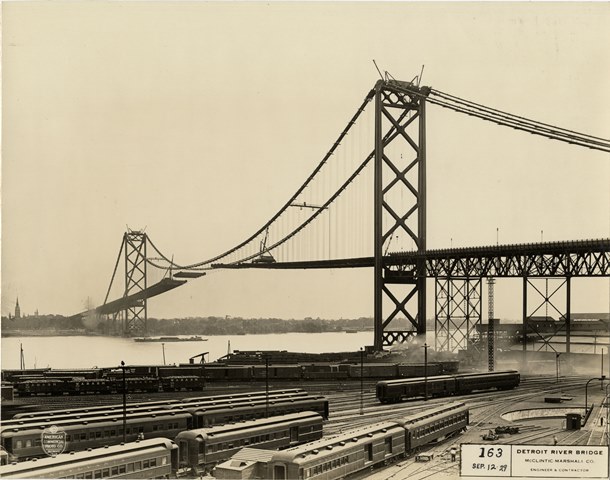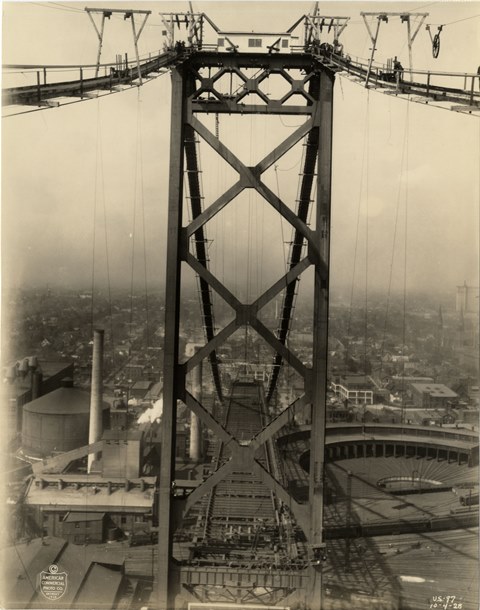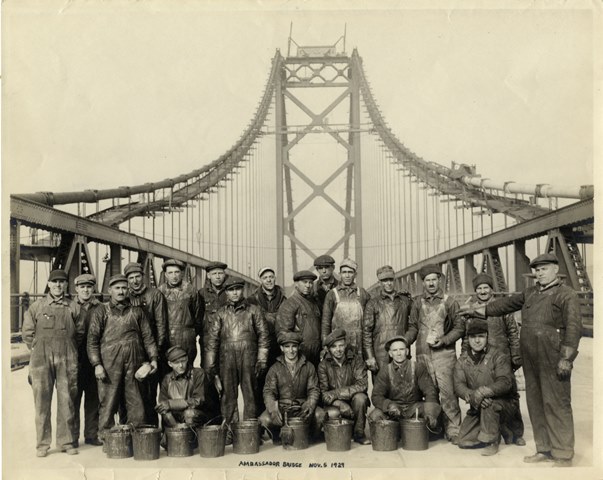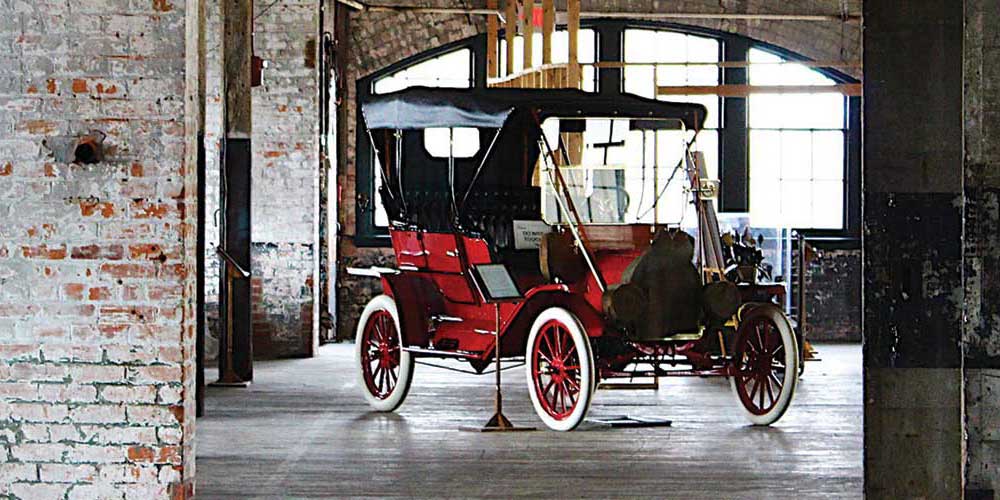By: Robert Tate
Posted: 09.06.2016
The Ambassador Bridge, located in Detroit, Michigan, is a landmark recognized across the world. Back in the early days, the narrowest part of the Detroit River was the site where the Huron Indians crossed with their canoes for travel. Historians declare that the Detroit connection to Canada began in 1874 by the Detroit Board of Trade who called a meeting that year to discuss the importance of travel.
In 1903, the Detroit Board of Commerce formed an International Bridge Committee and during 1919-1921, plans were underway by Mr. Charles Evan Fowler to build a combination railway and highway bridge system that would accommodate travel. Mr. Fowler was a consulting engineer who actually developed plans for a combination railroad and vehicle bridge for the American Transit Company; however, at the time, the railway system took very little interest in this idea and the project was soon canceled.
In 1924, Mr. Joseph A. Bower organized and financed the companies to build the Ambassador Bridge. The actual construction began on May 7, 1927 and the bridge opened to traffic on November 11, 1929. Mr. Ralph Modjeski, the world’s famous designer of bridges and rail lines, was called to the project as the Ambassador Bridge Architect Consulting Engineer.
The length of the Ambassador Bridge is about one and three quarter miles long. The suspension span is about 152 feet above the water. The cables are supported on silicon steel towers which rise about 386 feet above the ground. The towers were built on concrete piers resting on bedrock 115 feet below.
Back in the day, the majestic span that connected Detroit, Michigan with Windsor, Canada was the only international bridge in the world and the Bower Family was the only major stockholder invested in this project. 
On March 5, 1929, Mr. Bower received word from the engineers that there was an emergency with the production of the bridge. Unfortunately, the galvanized steel cables were splitting and 11,000 miles of wire would have to be removed and replaced with cold drawn steel cables which would delay the opening for another year. Although the news was tragic, the firm managed to get the work done in 27 weeks and instead of waiting a year to open, the dedication was still set for November 11, 1929.
Sadly, less than two weeks before the Ambassador Bridge opened, the stock market crashed and “Black Tuesday” was upon many Americans. At the time, both the President of the United States and Vice President felt that it was a wise decision to leave Washington, DC to help with the opening of the Ambassador Bridge Ceremony. Opening day of the Detroit-Border bridge created a tremendous amount of traffic flow which many thoroughly enjoyed. At the time, Detroit, Michigan had a population of 1,500,000 people and many had an interest in crossing the Ambassador Bridge just for fun.
The Ambassador Bridge was the greatest of modern suspensions bridges to span the Detroit River. The Ambassador Bridge also opened up a tourist paradise in Canada and provided a shorter route across Canada between New York, Buffalo, and Niagara Falls. The pleasant view of the Detroit and Windsor areas as seen from the Ambassador Bridge, either day or night, is a sight which many will always remember. The $21,000,000 Ambassador Bridge construction project had opened its doors to early investors and the greatest real estate investment opportunity in Detroit's history. Today, many of us have very fond memories of the Ambassador Bridge and its great legacy will also include many generations to come.
A special thanks to Robert Tate, Automotive Historian and Researcher, for donating the story to the MotorCities Story of the Week program. Photographs are courtesy of the National Automotive History Collection (NAHC) of the Detroit Public Library. (Bibliography: Ambassador Bridge Research Material- The Burton Historical Collection of the Detroit Public Library.)
For further information on photos please visit http://www.detroitpubliclibrary.org/ or email This email address is being protected from spambots. You need JavaScript enabled to view it.. For general comments on the story contact Robert Tate, This email address is being protected from spambots. You need JavaScript enabled to view it.. Please do not republish the story and/or photographs without permission. If you would like to contribute an article for the MotorCities newsletter, email This email address is being protected from spambots. You need JavaScript enabled to view it. or call 313-259-3425.



